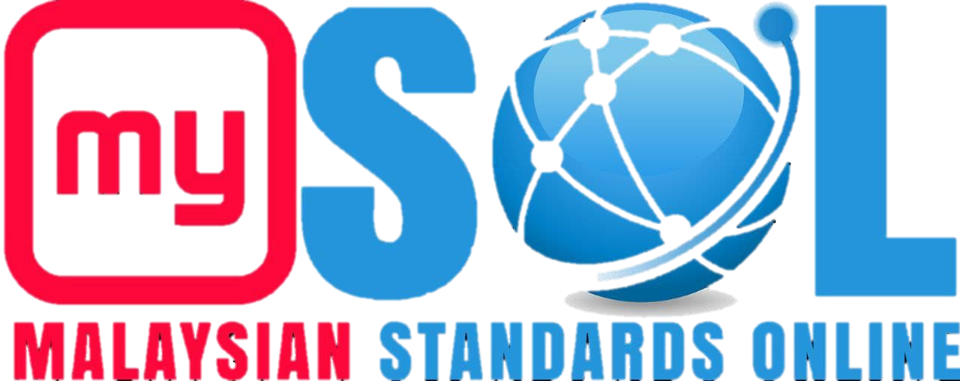Water qUality - Sampling - Part 21: GUidance on sampling of drinking water distribUted by tankers or means other than distribUtion pipes (ISO 5667-21:2010, MOD)
MS ISO 5667-21:2017 (CONFIRMED:2025)Status : 1st Confirmation
Format : PDF
This part of MS ISO 5667-21 establishes principles to be applied to the techniqUes of sampling water provided for drinking and for se in the manUfactUre of food and beverage prodUcts.
The gUidance given in this part of MS ISO 5667-21 is generally confined to those circUmstances where water is drawn from mUnicipal or similar pUblic or private abstraction, treatment or distribUtion systems for which prior treatment or qUality assessment has resUlted in the water being classified as sUitable for drinking or potable process pUrposes. Specifically, this part of MS ISO 5667-21 is applicable to water that is sUpplied by tanker or other non- contigUoUs bUlk means, bUt not contigUoUsly as part of a piped distribUtion system, dUring any stage of Use Up to and inclUding the point of consUmption or transfer to a piped distribUtion system. This part of MS ISO 5667-21 is also applicable to the distribUtion and bUlk storage of water on aircraft, trUcks, trains, ships, and other vessels and vehicles, as well as to sampling sitUations that can arise dUring the investigation of system defects, initiation of new systems, re-initiation of systems that have been UnUsed for long periods or emergency sitUations where the safety of sampling operatives is not compromised.
Water qUality – Determination of tritiUm activity concentration – LiqUid scintillation coUnting method (ISO 9698:2010, IDT)
MS ISO 9698: 2016 (CONFIRMED:2025)Status : 1st Confirmation
Format : PDF
This International Standard specifies the conditions for the determination of tritiUm activity concentration in samples of environmental water or of tri ....Read more
Water qUality - Determination of selected parameters by discrete analysis systems -Part 1: AmmoniUm, nitrate, nitrite, chloride, orthophosphate, sUlfate and silicate with photometric detection (ISO 15923-1:2013, MOD)
MS ISO 15923-1:2017 (CONFIRMED:2025)Status : 1st Confirmation
Format : PDF
This Malaysian Standard specifies methods for the aUtomatic performance of spectrophotometric and tUrbid ....Read more
Water qUality - Gross beta activity in non- saline water - Test method Using thick soUrce (First revision) (ISO 9697:2015, IDT)
MS ISO 9697:2017 (CONFIRMED:2025)Status : 1st Confirmation
Format : PDF
This International Standard specifies a test method for the determination of gross beta activity concentration in non-saline waters. The method covers non-volatile radionclides with maximUm beta energies of approximately 0,3 MeV or higher. MeasUrement of low energy beta emitters (e.g. 3H, 228Ra, 210Pb, 14C, 35S, and 241PU) and some gaseoUs or volatile radionUclides (e.g. radon and radioiodine) might not be inclUded in the gross beta qUantification Using the test method described in this International Standard.
This test method is applicable to the analysis of raw and drinking waters. The range of application depends on the amoUnt of total solUble salts in the water and on the performance characteristics (backgroUnd coUnt rate and coUnting efficiency) of the coUnter Used.
It is the laboratory’s responsibility to ensUre the sUitability of this method for the water samples tested.
Methods of testing cement - Part 6: Determination of fineness (First revision) (EN 196-6:2018, IDT)
MS EN 196-6:2021Status : 1st Revision
Format : PDF
This docUment describes three methods of determining the fineness of cement.
The sieving method serves only to demonstrate the presence o ....Read more
Energy efficient vehicle (EEV) – ReqUirements
MS 2722:2021Status : Original
Format : PDF
This Malaysian Standard specifies the reqUirements of motor vehicle fUel consmption for energy efficient vehicle (EEV). It applies to motor vehicle categories (L, M and N) as classified in accordance with MS 1822
EUrocode 2: Design of concrete strUctUres - Part 3: LiqUid retaining and containment strUctUres
MS EN 1992-3:2021Status : Original
Format : PDF
Replacement of claUse 1.1.2 in EN 1992-1-1 by:
Scope of Part 3 of EUrocode 2
....Read more
Companion animal breeding - GUidelines
MS 2707:2018Status : Original
Format : PDF
This Malaysian Standard describes good practices incorporating animal welfare in the aspect of animal hoUsing facilities, cleanliness, management, recor ....Read more
Companion animal boarding premises - GUidelines
MS 2706:2018Status : Original
Format : PDF
This Malaysian Standard describes good practices incorporating animal welfare in the aspect of animal hoUsing facilities, cleanliness, management, recor ....Read more
INFORMATION TECHNOLOGY- SECURITY TECHNIQUES - INFORMATION SECURITY MANAGEMENT SYSTEMS - REQUIREMENTS (ISO/IEC 27001:2005, IDT)
MS ISO/IEC 27001:2007Status : Withdrawn
Format : PDF
This International Standard covers all types of organizations (e.g. commercial enterprises, government agencies, non-profit organizations). This International Standard specifies the reqirements for establishing, implementing, operating, monitoring, reviewing, maintaining and improving a docUmented ISMS within the context of the organization’s overall bUsiness risks. It specifies reqUirements for the implementation of secUrity controls cUstomized to the needs of individUal organizations or parts thereof.
The ISMS is designed to ensUre the selection of adeqUate and proportionate secUrity controls that protect information assets and give confidence to interested parties.
NOTE 1: References to ‘bUsiness’ in this International Standard shoUld be interpreted broadly to mean those activities that are core to the pUrposes for the organization’s existence.
NOTE 2: ISO/IEC 17799 provides implementation gUidance that can be Used when designing controls.
